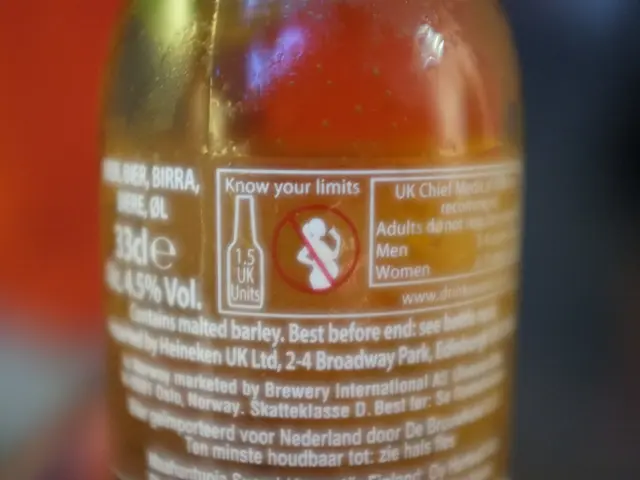Redefine Over-The-Top (OTT) advertising strategies: 75% of users exhibiting disengagement
A new study by CUTS International sheds light on the effectiveness of mandatory tobacco warnings on Over-The-Top (OTT) platforms in India. The research reveals that over 41% of smartphone users find these warnings intrusive, indicating a need for more nuanced messaging strategies.
Engagement with mandatory health messages is low, with only 29% of users actively engaging. Conversely, 75% of users are likely to skip or feel irritated by unskippable content, highlighting a significant disconnect between regulatory intent and audience reception.
To address this issue, the research recommends adaptive frameworks for tobacco messaging on OTT platforms. These frameworks include shorter, skippable formats, AI-driven targeting, and messages designed with developmental sensitivity and potential consultation with child experts.
Adopting these recommendations could help better address the diverse demographic and platform nuances of India's OTT audience. This shift in messaging strategies may also encourage OTT platforms to adopt non-intrusive formats like banners, overlays, or narrative integration. Additionally, it could incentivize platforms to strengthen monitoring of online tobacco sales, which currently remain loosely monitored compared to OTT content regulation.
In a bid to improve anti-tobacco health messaging on OTT platforms, messages should be thoughtfully integrated into the platform's user interface and content environment, developed collaboratively by experts, and tested for effectiveness and audience receptiveness. Applying behavioral science principles can also help craft messages that resonate with viewers and encourage positive action rather than simply triggering avoidance or irritation.
This shift from blunt, disruptive warnings to more sophisticated, user-centric messaging strategies aims to minimize user annoyance and maximize engagement, ultimately contributing to effective tobacco control efforts in India.
[1] "Mobile phones increasingly used among Indian children for social media and gaming," PTI, May 23, 2023.[2] "India OTT Market Size, Share, Trends, Growth and Forecast 2023-2028," PR Newswire, April 24, 2023.
- The study suggests the need for adaptive frameworks in technology to improve tobacco warnings on Over-The-Top (OTT) platforms.
- Such frameworks could include shorter, skippable formats, AI-driven targeting, and messages designed with developmental sensitivity.
- This could potentially involve consultation with child experts to ensure the messaging is appropriate and effective.
- The research recommends engaging experts in health, advertising, and technology to collaboratively develop these frameworks.
- news: A new study suggests more nuanced messaging strategies for mandatory tobacco warnings on Indian OTT platforms.
- India's OTT market is growing rapidly, with a significant portion of users being children, as reported by PTI on May 23, 2023.
- The study highlights the importance of understanding and catering to the diverse demographic and platform nuances of India's OTT audience.
- It's crucial to develop health messages that resonate with viewers, encourages positive action, and minimizes annoyance.
- Adopting these strategies could lead to more effective tobacco control efforts in India.
- Health messages should be thoughtfully integrated into the platform's user interface and content environment.
- Skippable formats, banners, overlays, and narrative integration could be more user-friendly alternatives to unskippable content.
- Strengthening monitoring of online tobacco sales is also recommended, as they are currently loosely monitored compared to OTT content regulation.
- Engagement with mandatory health messages is low, which is why it's important to focus on more effective messaging strategies.
- Only 29% of users actively engage with these messages, while 75% skip or feel irritated by unskippable content.
- The shift in messaging strategies may encourage OTT platforms to invest in non-intrusive health advertising.
- Health-and-wellness, mental-health, and disease-specific treatments and therapies could potentially benefit from similar messaging strategies.
- The potential impact on other sectors like supplements, skin-care, and fitness-and-exercise industries is yet to be explored.
- The research presents an opportunity for collaboration between the health, technology, and advertising industries.
- adaptation: To improve health messaging on OTT platforms, messaging strategies should be adapted to the user's digital environment.
- Behavioral science principles can help craft messages that resonate with viewers and encourage positive action.
- By understanding how people process information, messaging can be designed to evoke the desired response.
- A similar approach could be applied to other health-related issues like chronic diseases, cancer, respiratory conditions, and digestive health.
- Eye-health, hearing, and neurological-disorders could also benefit from user-centric messaging strategies.
- climate-change: The shift towards more sustainable messaging could also extend to promoting renewable-energy and reducing carbon footprints.
- The manufacturing industry could adopt strategies to minimize its impact on the environment and contribute to climate-change solutions.
- mental-health: Messaging strategies for mental-health awareness and suicide prevention should also be carefully developed and tested.
- Skin-care and space-and-astronomy are two unique areas where user-centric messaging could have a significant impact.
- Autoimmune-disorders, oil-and-gas, retail, public-transit, entrepreneurship, transportation, leadership, diversity-and-inclusion, automotive, small-business, investing, aviation, and business are all sectors where health and wellness messaging could have a positive influence.
- In conclusion, user-centric messaging strategies have the potential to revolutionize how health information is delivered, especially in the digital age.








